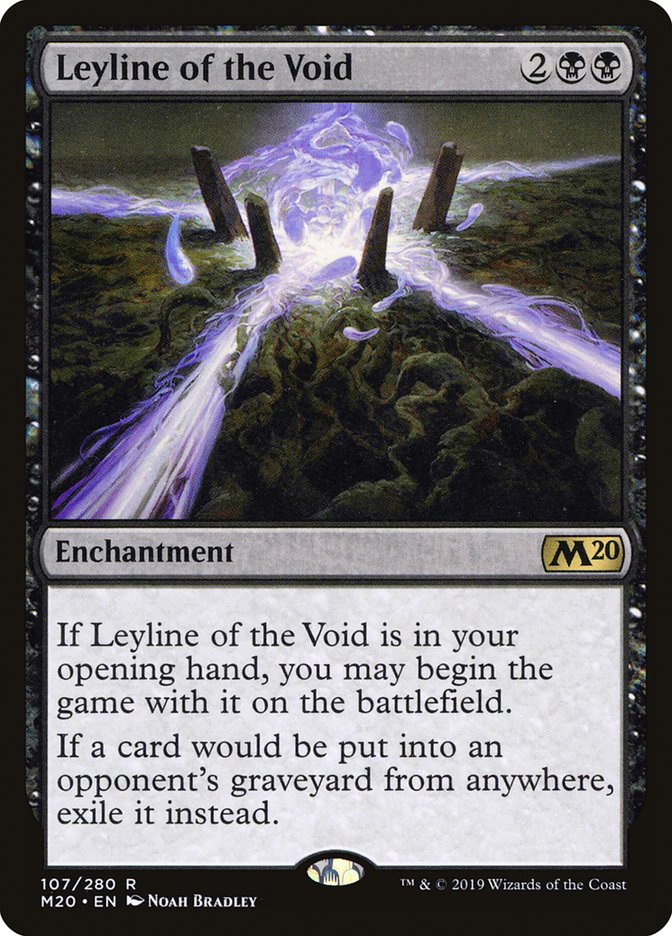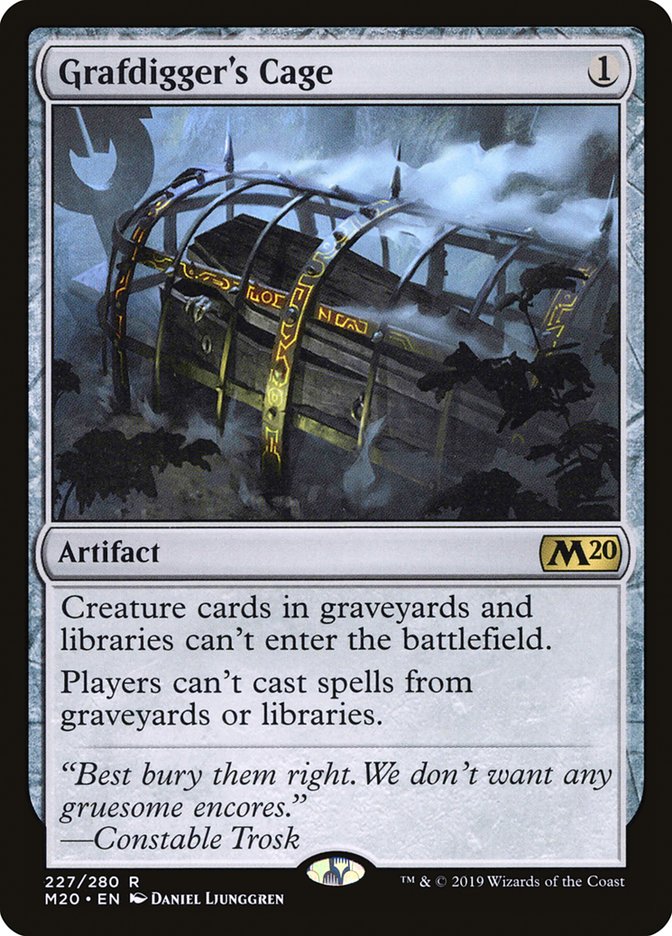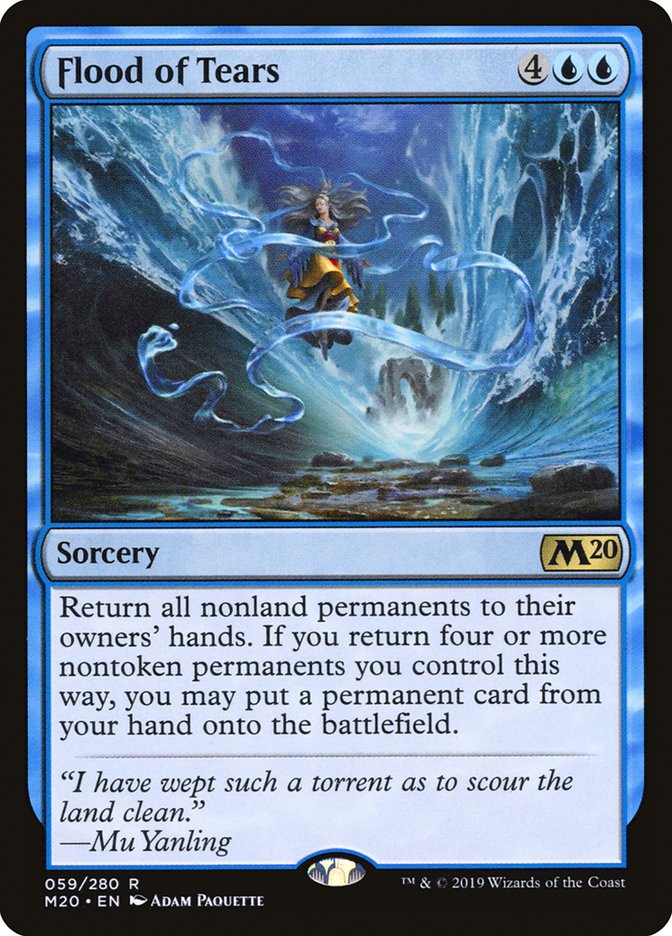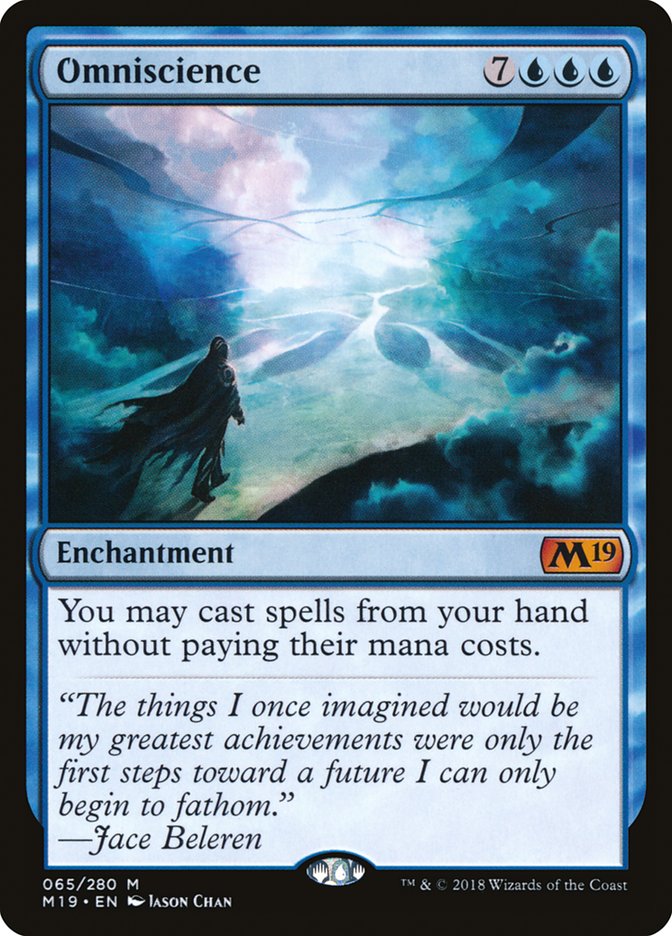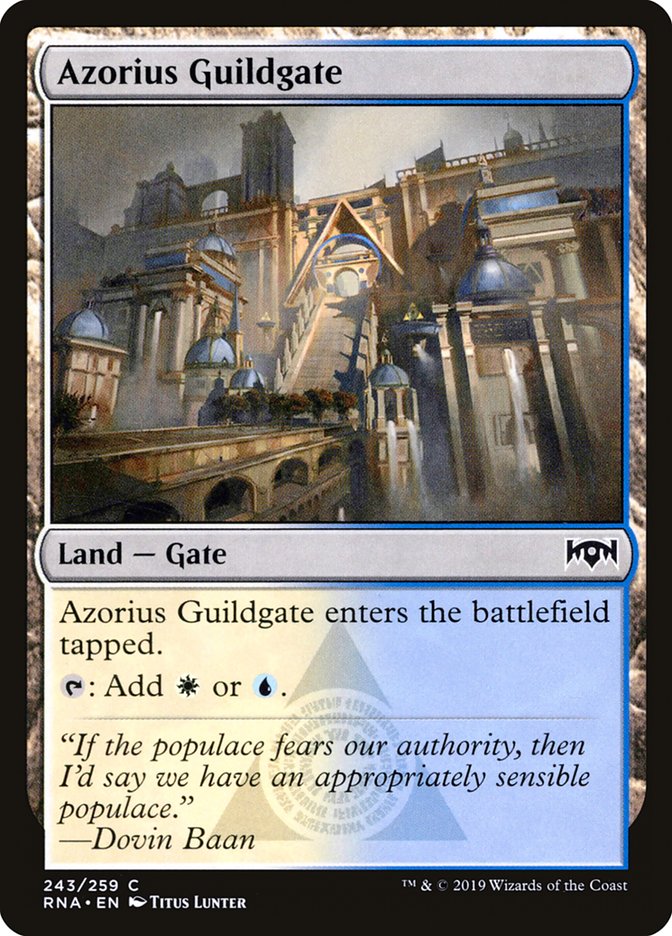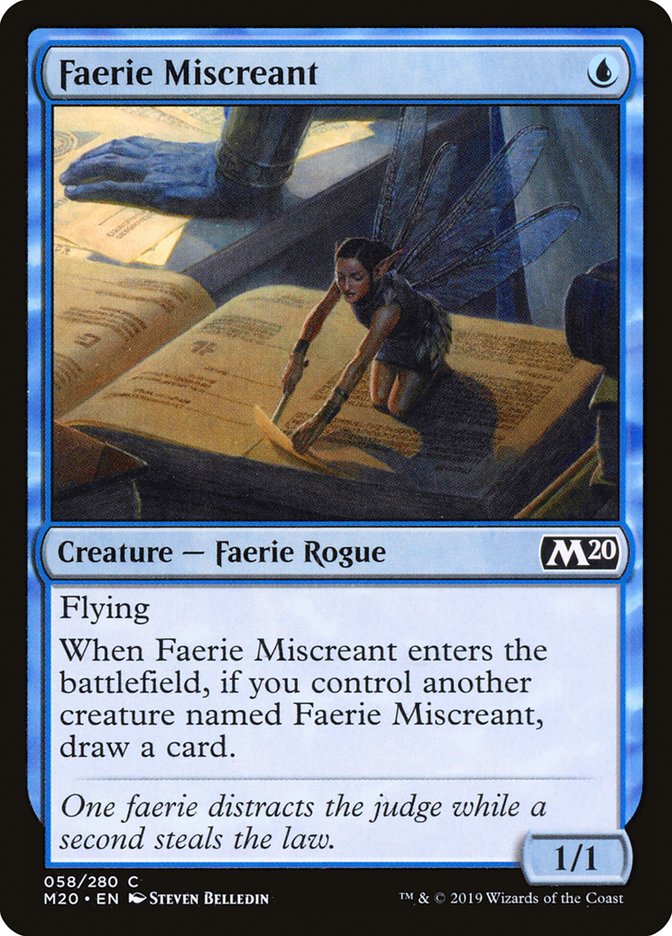One of the most common questions I get from podcast Patrons is what you have to do to succeed in a tournament when you don’t have access to a big team. We live in a world where a lot of the best professionals in the game test together in teams of up to twenty people, so the task of facing that when you don’t have access to nearly as many resources may seem insurmountable, but I promise you that it’s doable.
As a general rule, having a team is good for two things. First, having a team makes the testing process more fun and palatable, at least for me. I like hanging out with the people I test with and I rarely get to see them, so it doesn’t feel as much of a chore to test with them as it does to test by myself. Unfortunately, if you don’t have a team, you just have to grind – there’s no way around that.
The second thing having a team is good for is for trying to break formats. Usually, our testing process goes like this: we spend the first 80% of testing time trying new things in the hope we break the format and have an outstanding deck that no one else has, and then, once that invariably fails, we spend the remaining 20% of the time learning and perfecting a stock deck. So, for example, I’ll spend the first sixteen days of testing trying every new idea I have that I think can potentially be good, and then, if I find nothing, I’ll spend the last four days picking a stock deck, learning it, and tuning it to the metagame I expect to face at the tournament.
Creatures (31)
- 4 Carrion Feeder
- 4 Bloodghast
- 4 Hedron Crab
- 4 Vengevine
- 4 Gravecrawler
- 3 Satyr Wayfinder
- 4 Stitcher's Supplier
- 4 Hogaak, Arisen Necropolis
Lands (20)
Spells (9)

This is a daunting task to perform alone, as you need a lot of work hours to conceptualize a new list, test different configurations of different new decks against the entire field, figure out a sideboard, confirm these results as valid, and then tune the deck to the field you expect. Even if someone has a great idea by themselves, chances are they won’t be able to turn it into a winning list by the time the tournament comes unless they have help.
More importantly, if you’re working by yourself, if your deck fails, you have no backup. I allow myself to spend the first 80% of my testing time trying to break the format, even though I’m aware of the fact that I probably won’t end up breaking the format, because I know I have teammates who are working on the stock decks and who can give me a good list and teach me to play it in the remaining 20% of testing. I know I can leave the second step of testing for the last four days, since we can just focus all our brainpower in tuning and learning a deck last-minute and that’s often enough. If you don’t have more people testing with you, four days is just not enough to be proficient on a stock deck.
The solution to this is very simple, and if you take any one thing from this article, please let it be this:
If you don’t have a team, accept that you don’t have the resources to be innovative and move on to the second part of testing. Shortcut your testing process to assume you weren’t successful in Step 1 and then you can spend all your time in Step 2, which balances out the fact that you’re only one person.
This does mean you might miss out on a certain broken deck – for example, Eldrazi right after it was released – but if that happens, that happens. Nowadays, though, it almost never does. If we look at the best decks from the Mythic Championships from the past two years, this is what we find:
- Mythic Championship IV: Hogaak
- Mythic Championship III: There wasn’t really a best deck, but the most popular deck was Mono-Green Tron, even among pros (Modern almost never has a best deck)
- Mythic Championship I: Mono-Blue Aggro or Mono-White Aggro
- Pro Tour Guilds of Ravnica: Mono-White Aggro
- Pro Tour 25th Anniversary: Rakdos Aggro in Standard, Dimir Death’s Shadow in Legacy
- Pro Tour Dominaria: Rakdos Aggro
- Pro Tour Rivals of Ixalan: No best deck (Modern again; I don’t think any deck broke 15% of the field, Lantern won)
- Pro Tour Ixalan: Temur Energy
I’d argue that the only deck in this list that wasn’t already an established Tier 1 deck was Dimir Death’s Shadow in Legacy. Every other deck was either a super-known quantity (mostly in the case of Modern) or the accepted best deck in Standard (Rakdos Aggro, Temur Energy). More importantly, even the decks that weren’t the best deck were often good enough to win an event, which means you couldn’t have been too wrong by just picking something and going with it. For example, for the first Mythic Championship, I thought Mono-Blue and Mono-White were the best decks, but realistically you couldn’t have been too upset to have played Esper Control, Mono-Red Aggro, Simic Nexus, Izzet Phoenix, or Sultai Midrange – that’s basically the full spectrum of decks that were viable in Ravnica Allegiance Standard at the time and people did well with literally all of them.
We currently live in a world where the margins for the best deck (with rare exceptions like Hogaak) are very small – if the best deck is a 57% deck, there’s a large group that follows at 55%. For some of these tournaments, I couldn’t even tell you what the best deck was after the tournament happened, so what chance did we really have before? In the end, it doesn’t really matter which deck you choose. You can just pick any Tier 1 deck from the latest tournament, or articles, or your favorite streamer, and then focus on it.
Given that margins between decks are very small, most of your edge does not come in deckbuilding or deck selection, but in knowing how to play and sideboard with a deck – it’s better to play a 55% deck at 80% capacity than a 57% deck at 60% capacity. I would say that, if I’m testing by myself, I’d like to have a deck ready at least two weeks before the event, because that’s how long it takes to figure everything out. If you’re a very anxious person who (like me) wakes up at 5am in panic about their last sideboard slot, this might be a hard leap to take, but it will improve your chances.
Playing Online
Online play is the biggest equalizer between people with teams and people without teams, and also between people who have access to a way to play in their area (a busy local store, friends who play) and people who live in less concentrated regions. Many years ago, if you lived in a place where no one else played, you were kind of doomed – there was nothing you could really do to test. Nowadays, this isn’t true because of the online platforms – you can live in Siberia and still play eight hours of Magic a day if you want.
Online play can be very helpful, but you have to understand its limitations. When you play online, competition is usually worse, both in terms of decks that people play and in terms of how people play. People play a huge variety of decks online, especially in a format like Modern, and it’s easy to beat a bunch of random decks and consider your deck great when, in reality, you’re beating decks that basically don’t exist. For example, when we were testing for Mythic Championship IV, we played a League on Magic Online in which we faced 8-Rack, Grixis Control, Merfolk and Ad Nauseam. The combined number of opponents our entire team faced that was playing any of these decks at the Mythic Championship was zero.
Even if people are playing popular decks, their deck will usually be less tuned than at a Mythic Championship. For example, for Mythic Championship IV, we played against a lot of Jund players whose graveyard hate was Nihil Spellbomb and a lot of Humans players whose hate was Grafdigger’s Cage. When it came to playing the tournament, almost every single Jund deck had four Leyline of the Void, and a lot of Humans players did too.
Then there’s the matter of opposing skill. If you’re playing a Mythic Championship, your opposition as a whole will be far more skilled than on either Magic Online or Magic Arena. Magic Online is especially problematic here because there’s absolutely no filter, so you could be playing against someone who is legitimately very inexperienced. Magic Arena helps with this because you could play against better players by having a better ranking, but even inside of Mythic the players will be worse than the competition at the tournament you’re playing.
These factors combined mean you’ll get a warped idea of how good your deck is and of what beats what – it’s possible you were beating Mono-Red Aggro with Orzhov Vampires but that was only because all your opponents were sideboarding incorrectly, which people won’t necessarily do at the tournament. This makes online testing not very useful to get an idea of what’s good and what’s bad, which reinforces the thought that, if you’re a person working on your own, you shouldn’t be trying to come up with something new – you’ll simply lack the means to know if the deck you came up with is actually good.
What is playing online good for, then? Getting reps in. Playing online is very good for learning how your deck works, which hands you should keep or mulligan, and which sideboard cards are effective. It’s good for fine-tuning a deck and deciding which removal spell you liked more, or how many blue sources you need. Basically, it’s good for the second stage of testing. However, if you’re testing by yourself, you should skip directly to the second stage anyway, so playing online is perfect for this.
Should I Test Standard on Magic Online or Magic Arena?
For Modern, obviously you don’t have a choice – you have to play Magic Online. For Standard, I’d say it depends on your card availability. If you already own every card on Arena, I would recommend playing on Arena, as the games are faster, there is a rank that helps filtering the opposition, the better players are usually there (you can face a lot more of your Mythic Championship opposition on Arena), and the program is overall better (though obviously that is personal opinion).
The issue with Arena is that, once you craft a card, you’re stuck with it forever, which makes it hard to test many different decks. For example, a while ago I decided to try the Flood of Tears / Omniscience deck. I crafted four Flood of Tears and three Omnisciences, played the deck for two games, and realized it was bad and I didn’t want to play it again. At this point, I’m stuck with Flood of Tears and Omnisciences forever, and it’s debatable whether I’ll ever put these cards in a deck again.
This makes Magic Arena a worse platform to try out new decks, since there’s no way to do that without permanently acquiring the cards. If you have a low budget, I would recommend trying decks out on Magic Online first – the cards are cheaper there, you can sell them after you’re done, and there are several card rental services you can use. Then, once you figure out you like a deck, you move to Magic Arena and build it there so you can do the bulk of your testing.
Testing Limited
In Limited, things are different. There is no software that will give you the same experience you will have at the tournament (Magic Online doesn’t use pods and Arena doesn’t even have people), but if you understand the limitations of the program you’re using, you can correct for them. I’d say that a good number of drafts to aim for is fifteen, though obviously the more the merrier, and you should also try to get some information on what the professional players think by reading articles, watching streams, or watching coverage.
Playing Magic Arena with the bots is similar to playing Modern Leagues – you get a feel for how the format plays out, but not for what is actually good. It’s useful to jam drafts to know what the archetypes look like, what tricks exist, and the average size of a creature in the format, but you will not know the best archetypes because drafting with bots is very different from drafting with real people. This means you can do the bulk of your preparation on Magic Arena (say, your first ten to twelve drafts), but then you must complement it with either Magic Online drafts (which, despite not being pods, are much more similar to tournament conditions) or real-life drafts. I believe drafting on Magic Arena only can have disastrous consequences for your tournament.
As an example, in Ravnica Allegiance Draft, the bots from Arena really undervalued Gates – you’d basically get as many Gates as you wanted very late. This made the Gates strategy extremely strong and it also made it easy to play three or four colors because you got all your fixing anyway. In reality, people snatched up the Gates much sooner, which meant multicolored decks or Gates decks didn’t necessarily work, and that was something the Arena people literally never had to worry about. I know of many stories from Mythic Championship I where a player who drafted only on Arena found themselves with a non-functional manabase during the first draft. The same thing can happen with gimmicky decks, such as Faerie Miscreants in Core Set 2020.
In Limited, it’s also possible to “choose a deck and commit to it” like in Constructed, but you pay a bigger price – the edge you’re giving up in this spot is bigger than 1-2%. I think the best way to draft is to be flexible and go with what you’re given, but I know of people who have had success just focusing on one strategy and forcing that, and that’s something you can do if you don’t have much time to prepare (for example, you could find out that you win a lot more with Simic Elementals in Core Set 2020 Draft than with other color combinations, so you just force that and then you don’t need to learn all the archetypes).
Here, you must be extra careful, because if you only play on Arena you won’t know what the good decks are. If you’re going with the flow, you don’t necessarily need to know, but if you’re forcing a deck, it would not be pleasant to find out that the deck you’re forcing actually doesn’t exist in a real-life situation. So, while I don’t recommend testing only on Arena or forcing a deck, I really don’t recommend doing both at the same time.
Getting One Partner
The most time-consuming part of testing is sideboarding. If you have no one to help you test, trying out new sideboard cards takes an enormous amount of time, as you have to get paired versus the right deck and then draw the card on top of that. Sometimes you take an hour to get paired versus a specific deck, you win Game 1, they mulligan to five Game 2, and the game ends without you ever knowing if your sideboard strategy is actually good, and it can be hours until you get paired versus the same matchup again. If you can find a sideboard guide for the deck you’re playing, that’s a huge time-saver, but even then you should try to learn how the match actually plays out after sideboard.
This is where finding one person to play with you can be a huge help. If you have one partner, that’s already enough to focus-test the sideboarded matches and it will save you a ton of time. What I like to do is test the same matchup for a lengthy period of time, trying out different sideboard configurations, and sometimes I’ll even start with the sideboard card in my hand to make sure I have it in a game and can see how good it is.
So, to sum it up:
- Testing by yourself is harder but it’s doable.
- Don’t spend time trying to break the format or build a new deck; you’ll very likely not succeed and you don’t have the time to waste.
- Nowadays, the gap between all the good decks is very small, and it’s more important to play the deck well than to choose the right deck, so you should choose your deck early and maximize the time you have to learn it. I would try to choose my deck at least two weeks before the event.
- Magic Arena offers better testing but is more expensive. If you’re on a budget, consider trying out decks on Magic Online first and then, once you’ve decided, switch to Arena.
- For Limited, Magic Arena can be useful for learning the format but not for knowing which decks are the best. You can prepare using Arena but you must also play a few drafts with humans, either on Magic Online or in person.
- You should try to do at least fifteen drafts.
- Forcing a deck isn’t the best strategy but it’s something you can do if you don’t have enough time to test or if you don’t feel comfortable navigating the Limited format.
- Getting one partner at some point to help you with sideboarded games is a huge time-saver.
Good luck!


